|
Junkers Ef 126 / 127
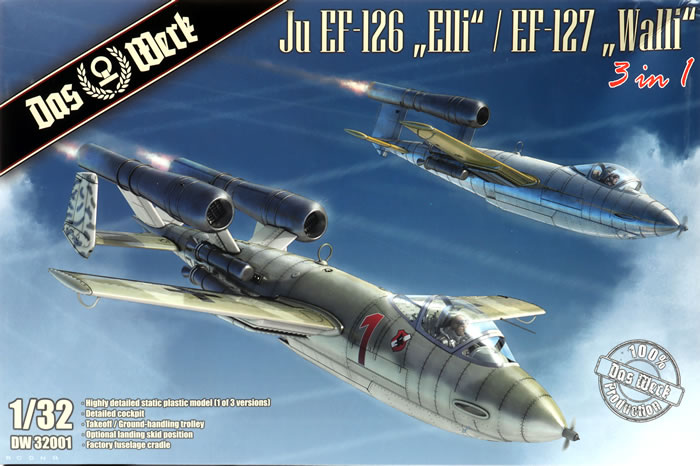
Das Werk, 1/32 scale
S u m m a r y : |
Catalogue Number: |
Das Werk Kit No. DW32001 – Junkers Ef 126 / 127 |
Scale: |
1/32 |
Contents & Media |
139 parts in grey plastic; four parts in clear; 40 page instruction book; markings for many aircraft. |
Price: |
£34.95 EU Price (£29.13 Export Price) plus shipping available online from Hannants
and hobby shops worldwide and online
Purchased for AUD$94.99 from Metro Hobbies (Melbourne)
Click here for currency conversion |
Review Type: |
First Look. |
Advantages: |
Excellent moudling quality; high level of detail; many interesting options including three major airframe variations, ground handling trolley, cradle and wings that may be posed off the airframe. |
Disadvantages: |
Scalloped fabric control surface texture won't be to everyone's taste. |
Conclusion: |
Das Werk has delivered a crisply moulded, interesting and well-detailed kit of this almost operational jet/rocket fighter. There are plenty of options too. If you feel like painting a scheme that nobody can argue with, Das Werk's Ef 126/127 might just be the model for you! |
Reviewed by Brett Green
The Junkers Ef 126 was an experimental fighter proposed by the German Minaturjägerprogramm of 1944-1945, for a cheap and simple fighter powered by a pulse jet engine. No examples were built during the war, but the Soviet Union completed a single unpowered prototype, which crashed during testing. And one in 1947 with a running engine.
The design of the Ju Ef 126 was developed into the Junkers EF 127, a rocket-powered version.
Junkers' Ef 126 was a similar layout to the V-1, with the single Argus 109-044, rated at 4.9 kilonewtons (1,100 lbf), mounted above the aft fuselage and fin.

The fuselage was of metal construction while the wings were wooden.
A retractable nosewheel undercarriage was to be fitted. As the pulse-jet's power would reduce at altitude, the aircraft was intended for low-altitude use, and had a secondary ground attack role.
Armament consisted of two 20 mm MG 151/20 cannon while up to 400 kg (880 lb) of bombs could be carried under the wings.*
Luft '46 continues to prove popular with modellers. German conpany Das Werk now dips its toe into this particular pool with their first 1:32 scale aircraft kit.
Das Werk's 1:32 scale Junkers Ef 126 / 127 comprises 139 parts in grey plastic, four parts in clear, 40 page instruction book and markings for many aircraft.
The already modest parts count is actually even smaller in reality as there are a large number of options. These include:
-
Three alternative airframe configurations - one Argust pulse jet, two Argus pulse jets or one Walther 509C rocket engine.
-
Landing skid that may be posed retracted or extended.
-
Optional factory cradle for display.
-
Wings may be posed off the airframe, including parts for the wing spar mounting points.
-
Eight Rocket Assisted Take Off boosters.
-
24 R4M air-to-air rockets and two underwing launching trays.
-
Poseable canopy.
Moulding quality is excellent, with narrow sprue attachments and no sign of flash or any moukding flaws.
Surface textures are well defined with crisply recessed panel lines and rows of recessed rivets supplemented by raised panels, hatches and selected raised rivet heads.
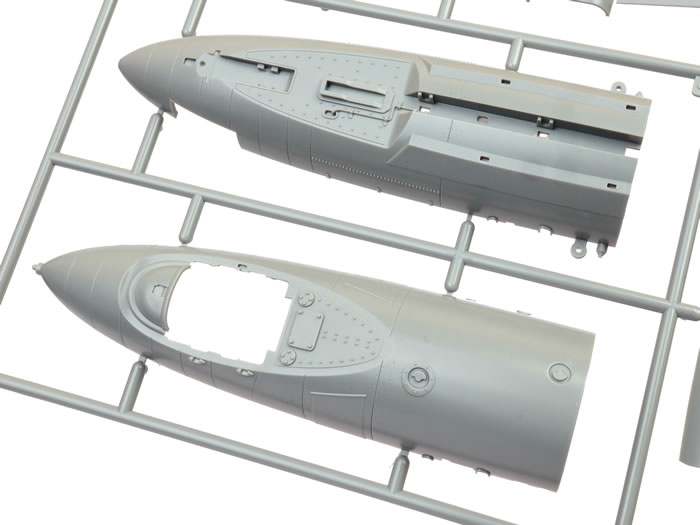
Das Werk has created an oil canning effect - a distortion of thin metal over frames - on some surfaces including the rear fuselage. I like this.
I don't really like the attempt at fabric control surface texture though. This is a series of capsule shapes. I will be filling these when I build my model.
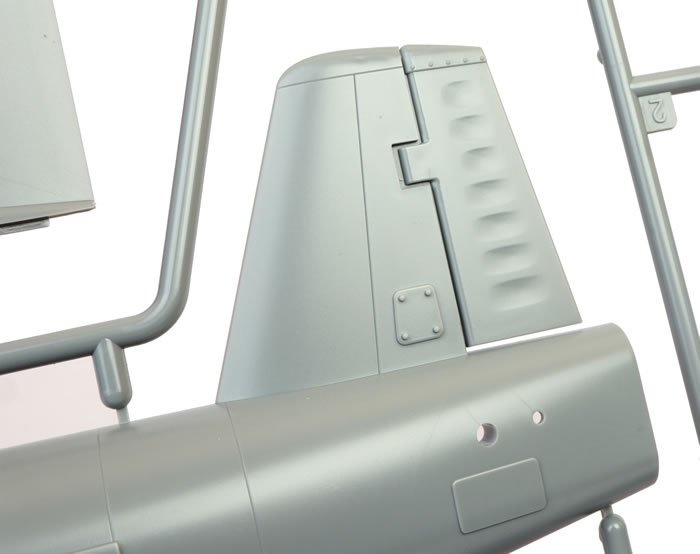
The raised radial lines on the main wheels are a bit heavy for my taste too.

Detail overall is very nice. The cockpit is as simple as you would expect, but everything is provided except harness straps. The ejection seat features a separate back rest cushion and head rest. The ejector rails are moulded onto the back of the seat.
The instrument panel is a single plastic parts with raised bexels. A supplementary panel is located between the rudder pedals.
Parts breakdown is fairly conventional. The forward fuselage is split into upper and lower halves, while the optional rear fuselage parts have left and right halves. A wing spar is moulded onto the mid-fuselage bulkhead to ensure the correct dihedral of the wings.
The mounting plates for the RATO bottles are moulded to the rear fuselage. I would have preferred to see these as separate parts so the modeller would have the option to depict a clean rear fuselage.
All control surfaces are moulded onto the wings and tail planes in neutral positions. The wings are smooth, as you would expect with their wooden structure.
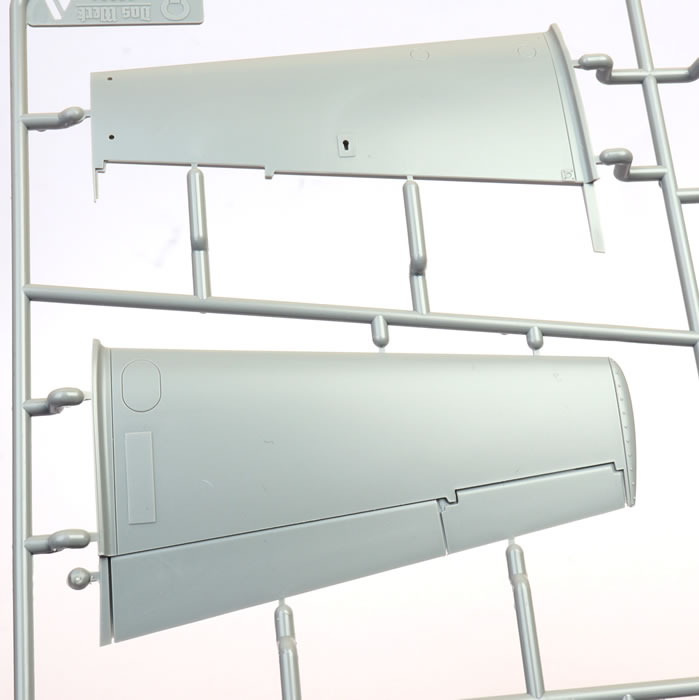
Four clear parts are included - three for the canopy and a gunsight. They are thin and clear. There is no raised centreline seam on these parts.
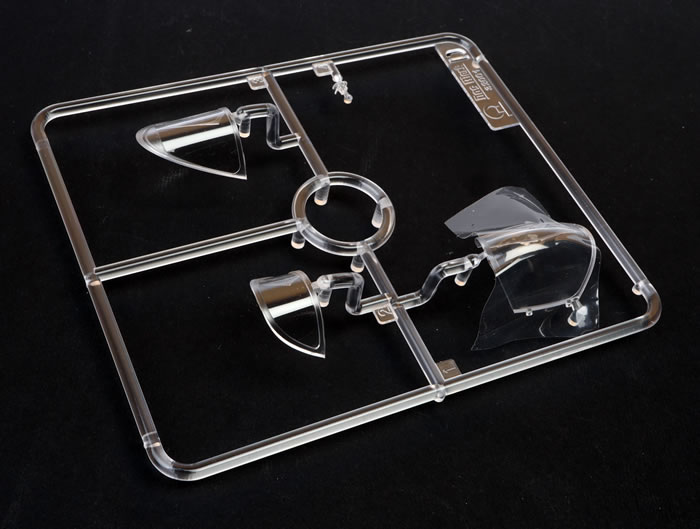
The instructions are supplied as a 40 page book. The sepia paper is tea-stained for an aged effect, and assembly is called out using clear diagrams and selected text.
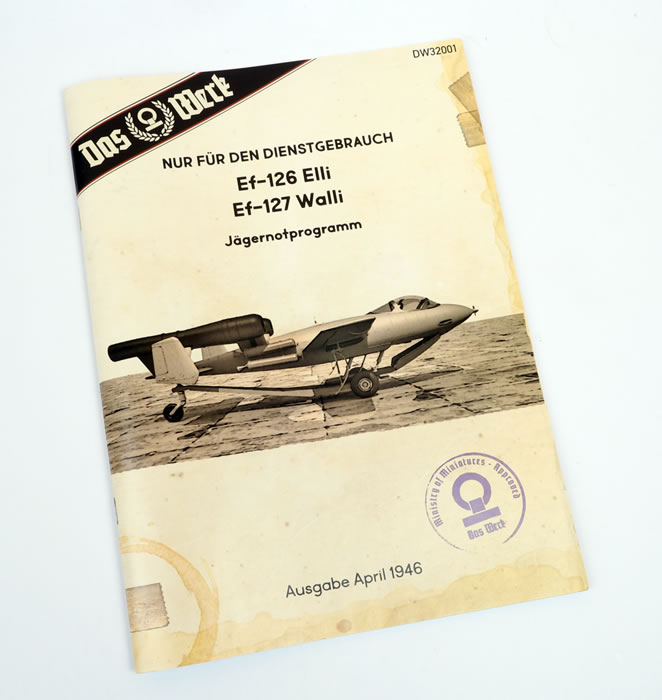
The instructions also include a parts diagram, a little story of an operation and a whole heap of hypothetical finishes.
Markings
The decal sheet is printed by Cartograf. They are glossy in finish and colours look great.
A range of national markings, unit markings and numbers are included. You are completely free to use your imagination with these.
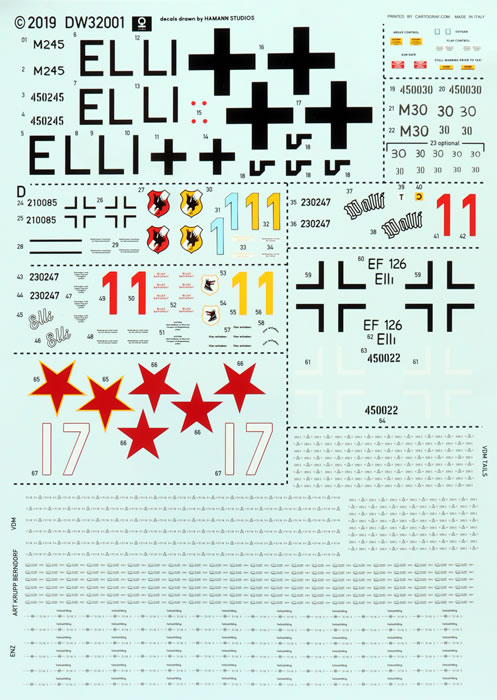
Also included are a series of fine factory stamp decals for bare metal surfaces. This is a really nice touch.
Colour callouts are made for Mr Hobby, Tamiya, AMMO MIG, Hataka and LifeColor.
Das Werk has delivered a crisply moulded, interesting and well-detailed kit of this almost operational jet/rocket fighter. There are plenty of options too.
If you feel like painting a scheme that nobody can argue with, Das Werk's Ef 126/127 might just be the model for you!
*Historical summary adapted from Wikipedia
Purchased retail by the reviewer
Review Text and Images Copyright © 2020 by Brett Green
Page Created 17 June, 2020
Last updated
23 June, 2020
Back to HyperScale Main Page
Back to Reviews Page |
